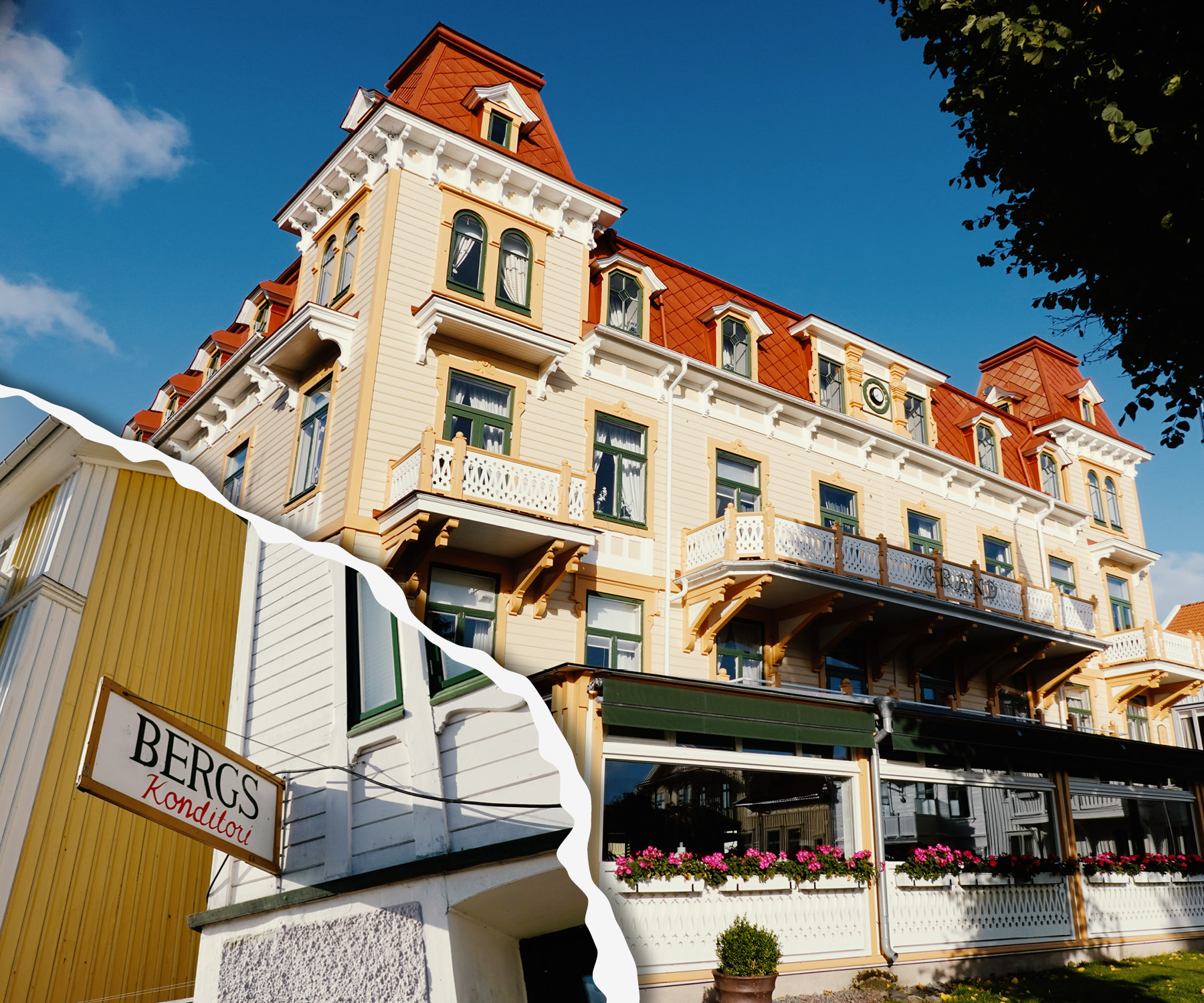Language
You can read the magazine in one of the following languages
I half wonder if I should jump into bathers, don a snorkel and mask and just fin across to the island. From the bridge-accessed island of Koön, my ferry voyage, aboard Lasse Maja to the car-free island of Marstrandsön, is a bemusing three-minute journey. Uniquely, the holiday town of Marstrand stretches across the two islands, dissected by a slither of strait.
I giggle at the novelty of my epic three-minute cruise. And feel like a child on a playground ride to a quayside of buildings weatherboarded in banana yellows, apple greens and borage flower blues. The tranquil postcard-perfect summer destination teeters on the far western edge of Gothenburg’s wind-shaved Bohuslän archipelago, where wild seas roam and foam.
I stroll along Marstrandsön’s cobblestone dock, home to the traditional café Bergs Konditori. Café culture in Sweden is taken seriously. The regular fika ritual is to enjoy a hot drink and traditional cinnamon bun. For almost a century, the historic patisserie has been alluring locals and visitors with its renowned home-baked treats. Its quayside terrace is an idyllic scene, basking somewhere between Impressionism and Realism.
It’s an unhurried springtime day, but come summer, Marstrand’s usual population of approximately 1400 swells when island-hoppers and sailors arrive, docking at the country’s largest guest harbor. In early July, the island stages the GKSS Match Cup Sweden, turning the town into Sweden’s yacht-dotted sailing capital.
Historically, the island was under Norwegian rule, becoming part of Sweden in 1658. The region’s herring boom peaked in the 16th-century, when Marstrand was the capital of Europe’s herring industry. For centuries, herring was the lifeblood of the town.

Its quayside terrace is an idyllic scene, basking somewhere between Impressionism and Realism.
Lining the quintessentially Scandinavian streets, Marstrand is charmingly ornamental. Flawless wooden houses sit blushing in a rainbow of pastel hues, evoking childhood stories of gingerbread men and candy-clad homes. But Viking history continues to command attention.
Crowning the town’s highest point is 17th-century Carlstens Fästning. The fortress steals fine views of the islands of Åstol and Dyrön. Idyllic it may seem up here, but the fortress also operated as a prison. And it has one eccentric story to tell.
Lars Larsson Molin was a trickster thief. Dressing in the guise of a woman, and feminizing his name to Lasse-Maja, he is said to have robbed the rich to give to the poor. Arrested in 1812, he was sentenced to life at the prison.
However, the inmate was a superb cook, and so served much of his 26-year sentence as a personal chef to the officers until being pardoned by the King. During his unorthodox life, he went on to pen a bestseller, his (now somewhat romanticized) memoir.
Visitors can stay overnight at the fortress. But I refuse to be captured, so decide to go and take a hike.
Hopping onto the Gunnars Båtturer ferry, I take the tiny MS Drott through Gothenburg’s craggy islet-strewn straits. The 40-minute journey lands me at Sydhamnen, on car-free Dyrön Island, where a wooden crate of apples and pears welcome disembarking passengers.
Dyrön Island is environmentally diverse, with two mountains, rocky cliffs, forests, valleys and coves. Its permanent population of almost 600 bulges during high season when flotillas of boaters, swimmers, hikers, alfresco diners and artists arrive for a slice of Dyrön’s summertime vibes.
From the sheltered harbor, I follow the five-kilometer Dyröleden Trail. It may not be the longest trek in the archipelago, but its precipitous terrain makes for a challenging scramble. I navigate mossy escarpments and lichen-splashed boulders until wind-tousled wildflowers and shrubs cascade like unvacuumed shag-pile carpets.
I skirt around the bathing bay of Sandviga Badplats. It’s more suited to acclimatized skinny-dippers than puffer-jacketed me. Skipping into the more temperate evergreen needleleaf forest, its canopy of birch, pine, spruce and alders choreograph a sun-dappled light show. I emerge to a puzzle of steps, footbridges and boardwalks, confidently clasping lofty sea cliffs.

I emerge to a puzzle of steps, footbridges and boardwalks confidently clasping lofty sea cliffs.
The breathy hilly terrain brings sets of undulating staircases carved into the gneiss, amphibolite and granite bluffs. From one, I spot a foraging mouflon sheep. Its rust-orange fur, chocolate-brown chest stripe, and arced horns render it handsomely attractive.
Reaching Nordhamnen, I spot Trålverket, a cutesy café housed in an old fishnet-making workshop. Of course, I stop for afternoon fika. It arms me for the final assault.
Dynes Ravine is a lung-buster. The steep climb up its narrow steps, wedged into the cleavage of two buxom cliffs, is both dizzying and thrilling. It has me spare a wheezy thought for the group of retired locals who, in 2008, developed the island’s circuit walk without profit. It’s owned and cared for by Dyröns Samhällsförening, the island’s conservation-focused community association.
Conquering the peak on this blustery western side of the island, the view across to nearby Åstol is a head-spinner. During the late 18th-century, fisherfolk flocked to Åstol with their boats, nets, boilers and salters, hungry for the profits from its herring shoal-packed fjord and perfectly positioned harbor. I marvel at the scapula-to-scapula bright white homes, jostling at every angle for their own patch of rocky real estate on this striking volcanic isle.
The final descent lands at a solitary seaside hut. Perched upon rocks, and overlooking Hake Fjord, is the island’s public bastu (sauna). After my day of lactic-acid hoofing, it’s a welcome sight. More courageous is the male platinum blond Swede who plunges into the icy seawater first, before entering the sauna. I acknowledge him more with a chattering grind than a smile.
With my body now defrosted, I devour a harborside seafood lunch at neighboring Linas Brygga. It’s toasty and homely in this doll’s house of a diner. Gazing through the storybook windows onto Sweden’s western wilds, I feel nourished and refueled. On an island designed for imaginative escapists, I imagine I’m a reincarnation of Pippi Longstocking.

Marstrandsön is a 45-minute drive north-west of Gothenburg. EverTrek offers self-guided journeys, issuing walkers with directions and maps. The company is a member of the Adventure Travel Trade Association (ATTA), which represent authentic, ethical and sustainable travel experiences. For further information on EverTrek’s suite of itineraries, visit www.evertrek.se

